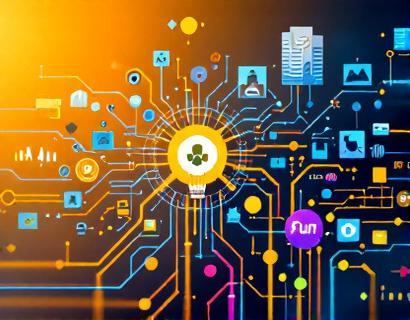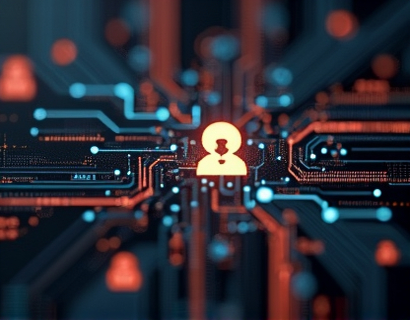Transforming Education with AI-Driven Chatbots: A Comprehensive Guide for Students, Families, and Educators
The integration of artificial intelligence in educational settings has opened new avenues for learning, making knowledge more accessible and personalized than ever before. Among these innovations, AI-driven educational chatbots stand out as a powerful tool, offering specialized insights tailored to the needs of students, families, and educators. This article delves into the capabilities and benefits of these chatbots, focusing on how they provide industry-specific knowledge and services while ensuring a safe and educational experience for all users.
Understanding AI-Driven Educational Chatbots
AI-driven educational chatbots are sophisticated software applications designed to simulate conversation through natural language processing and machine learning algorithms. These chatbots can understand and respond to user queries in a human-like manner, providing instant access to a wide range of educational content. Unlike traditional Q&A systems, these chatbots learn from interactions, improving their responses over time to better meet user needs.
Specialized Insights for Students
For students, AI chatbots serve as personal tutors, offering support in various subjects and topics. These chatbots can provide detailed explanations, solve complex problems, and offer study tips tailored to the student's level and learning style. The content is curated from verified sources, ensuring accuracy and reliability. Students can engage in natural conversations, asking questions and receiving answers that cater to their specific learning challenges, thereby enhancing their understanding and retention of the material.
Support for Families
Families play a crucial role in a student's educational journey, and AI chatbots can be invaluable in supporting parental involvement. These chatbots can offer insights into educational standards, help with homework, and provide resources for further learning. For parents who may not have a strong background in certain subjects, AI chatbots bridge the knowledge gap, enabling them to assist their children more effectively. The chatbots can also facilitate communication between parents and educators, keeping everyone informed about the student's progress and areas needing attention.
Enhancing Educator Resources
Educators benefit significantly from AI-driven chatbots as well. These tools can assist teachers in lesson planning, providing them with a wealth of educational resources, teaching strategies, and classroom management tips. Chatbots can analyze student performance data, offering insights that help educators tailor their teaching methods to better suit individual student needs. Additionally, these chatbots can serve as a platform for professional development, offering continuous learning opportunities and staying educators updated on the latest educational trends and technologies.
Ensuring Content Verification and Safety
A critical aspect of AI-driven educational chatbots is the commitment to content verification. All information provided is sourced from credible and authoritative databases, ensuring that students, families, and educators receive accurate and up-to-date knowledge. This verification process involves rigorous checks and cross-referencing with trusted educational materials and expert inputs. Moreover, these chatbots are designed with safety in mind, featuring child-friendly interfaces and content filters to protect young users from inappropriate or harmful information.
Child-Friendly Features
Recognizing the importance of a safe online environment for children, AI educational chatbots incorporate several features to ensure a secure and positive experience. These include age-appropriate language, simplified explanations, and interactive elements that engage young learners without overwhelming them. Parents and educators can also set parameters and monitor interactions, providing an additional layer of oversight and control. This ensures that children can explore and learn freely, knowing they are in a safe digital space.
Interactive Learning Experiences
AI chatbots go beyond traditional Q&A formats by offering interactive learning experiences. Through quizzes, games, and simulations, these chatbots make learning fun and engaging. For instance, a student studying history can engage in a virtual time-travel adventure, answering questions and completing tasks that bring historical events to life. Such interactive elements not only enhance learning but also cater to different learning styles, making education more inclusive and effective.
Personalized Learning Paths
One of the most significant advantages of AI-driven educational chatbots is their ability to create personalized learning paths for each user. By analyzing user interactions and performance, the chatbot can identify strengths and weaknesses, adjusting the content and pace of learning accordingly. This personalized approach ensures that each student receives the support they need to succeed, whether they require additional practice in a particular area or advanced challenges to keep them engaged.
Collaboration and Community Building
AI chatbots can also foster a sense of community among students, families, and educators. Through discussion forums, group projects, and collaborative learning activities, these chatbots facilitate interactions that extend beyond the classroom. Students can form study groups, share resources, and collaborate on assignments, while families and educators can connect to exchange ideas and support each other in the educational process. This community aspect enhances the learning experience, promoting a collaborative and supportive educational environment.
Continuous Improvement and Adaptation
The beauty of AI-driven chatbots lies in their continuous improvement and adaptation capabilities. These systems learn from each interaction, refining their algorithms and expanding their knowledge base. Feedback from users plays a crucial role in this process, allowing the chatbot to address common queries more effectively and introduce new features based on user needs. This dynamic nature ensures that the chatbot remains a relevant and valuable tool in the ever-evolving landscape of education.
Overcoming Challenges and Ensuring Effectiveness
While AI-driven educational chatbots offer numerous benefits, there are challenges to consider. One key challenge is ensuring the chatbot's responses remain contextually relevant and pedagogically sound. To address this, ongoing collaboration with educators and subject matter experts is essential. These professionals provide insights and feedback, helping to refine the chatbot's content and functionality. Additionally, regular updates and maintenance are necessary to keep the chatbot aligned with educational standards and technological advancements.
Conclusion
AI-driven educational chatbots represent a significant leap forward in educational technology, offering specialized insights and support to students, families, and educators. By providing verified content, ensuring safety, and fostering interactive and personalized learning experiences, these chatbots enhance the educational journey for all users. As technology continues to evolve, the potential for AI in education remains vast, promising a future where learning is more accessible, engaging, and effective than ever before.











































